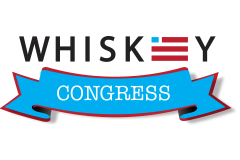
What’s True About the Debate Over Trump’s Zero Tolerance Border Policy
The Trump Administration made a policy change that shifted from the Obama era policy of “catch and release” (which only applied to those caught with no history of entering illegally and or were not high risk criminals), to a policy that requires criminal prosecution of any and all caught entering the country illegally whether it’s their first time or 3rd, or 10th.
While entering the country illegally is not a felony, it is a misdemeanor punishable by fines and jail time up to 6 months and 2 years for subsequent offenses. See the US code 8 U.S. Code Sec 1325 – Improper entry by alien here.
Contrary to what is being said, asylum seekers must show up to the appropriate ports of entry to make a request for asylum and they must do so prior to being arrested for entering the country illegally, which is where advocates and those seeking asylum are making a mistake. In my opinion the reason for the mistake by advocates and by those looking for asylum is the phrasing of the rules from the US Citizenship and Immigration Services. On the one hand in order to obtain asylum via the affirmative asylum process “you must be physically present in the United States. You may apply for asylum status regardless of how you arrived in the United States or your current immigration status”. That sentence would lead you to believe that whether you crossed at some random location in Texas or at a border crossing station set up by DHS/ICE/USCIS you should be able to begin the asylum process as long as its within one year of their arrival in the United States. The problem is when you go further and look at “Step One: Arrive in the U.S.” it states “To apply for asylum in the U.S. you must be physically present in the U.S. or seeking entry into the U.S. at a port of entry”. That reference to the requirement of entering at a port of entry is what DHS is focusing when it detains people for crossing the border, many of those being detained essentially aren’t coming in at the right location and therefore are committing a crime (a misdemeanor, but still a crime) and the process for adjudication and deportation begins at that point.
While the last section is bleak, individuals being detained for entering illegally do have a defensive process to apply for asylum where they can apply during adjudication of their illegal entry/deportation case.
Now, what about the kids? Well that’s also multilayered and complicated (to a degree), but I will attempt to explain. Much of the conflict in interpretation extends from a consent decree from the Bill Clinton Administration known as the 1997 Flores Settlement, Reno v. Flores, 507 U.S. 292, 296 (1993) settled in 1997. That settlement stated in short that minors detained by INS are to release said minors within 5 days to a parent, legal guardian, adult relative, adult individual or entity designated by the legal guardian, a licensed program, or an individual seeking custody. Fast forward to 2016 where this settlement had been challenged where the government wanted to amend the settlement and clarity was needed on multiple issues, the final decision was handed down by the 9th circuit in Flores v. Lynch. The court held that the settlement requires the release of accompanied and unaccompanied minors, and does not require the release of the accompanying parents. Put another way, when children come across the border, whether alone or with their parents, they can only be detained for so long and then must be released to one of the individuals listed above, or held until appropriate arrangements can be made to place them with a sponsor or agency.
In theory the above is a good thing, because we decided that we didn’t want to keep children locked up just because they crossed the border. The problem, which the court recognized then and everyone is upset about now, is that the settlement didn’t account for keeping families together from the time they cross the border through the entire process. The settlement didn’t set up special accommodations for families, and didn’t allow for parents to be released if detained for coming across the border with children.
A brief recap before we continue, an adult caught crossing the border anywhere except a designated port of entry can be charged with a misdemeanor criminal offense and immediately processed for deportation. That person can use the defensive process to then apply for asylum after the fact, but it doesn’t necessarily stop or slow down the deportation process. If that person comes across with a child, that child can only be held for a short amount of time with the parent, and then according to the consent decree settlement and appellate court decision, must be released. Although the children must be released in a timely fashion there are massive numbers of children that can’t all be moved to family members or sponsors at once. These children need to be housed and currently are housed in tender age shelters for the youngest children, or tent cities for the oldest kids. While reports are saying the facilities are clean and have the basic needs covered, the youngest children at the tender age shelters are not receiving the comfort they need to deal with the terrifying situation. For some this may not rise to the level of “abhorrent”, if you’ve ever had a child of your own, and you have a scrap of empathy, you feel otherwise. The government has no obligation to release the parent with the child at that point or any other point during the process if the adult is facing criminal charges. Also worth noting, if the adult and minor enter the country through a designated port of entry, seeking asylum, the adult will not be detained although there is heavy scrutiny regarding requests for asylum.
Under President George W. Bush the Supreme Court ruled in Zadvydas v. Davis that the government could not indefinitely hold individuals beyond six months if ICE could not actually deport them in a reasonable time frame. Due to lack of room and staffing issues “catch and release” grew out of a confluence of a court decision, inadequate facility space, and agency logistics relating to processing and deportation. The Federal government has chosen at various times to be more or less aggressive with arrests regarding illegal entry to the country. Obama at times was more aggressive, but adopted a less aggressive approach and deemphasized arresting and deporting illegal entrants unless they were high risk/high level offenders or repeat offenders. This is what we call prosecutorial discretion and its supported by the Supreme Court of the United States. The Executive Branch and those that enforce the laws for the executive branch have the ability to decide when to charge a person with a crime and what to charge them with. President Trump along wit h Attorney General Jeff Sessions and Secretary of DHS Kirstjen Nielsen as the key pieces to the Executive Branch in this saga, can very easily say they are changing the policy and no longer detaining all illegally crossing immigrants. Just like Attorney General Sessions issued a memo on April 6, 2018 implementing the zero tolerance policy for illegal immigration, he could issue another memo altering and superseding the first.
The truth of the matter is, border security is an issue. We can’t ignore it, we can’t deny it, we can’t act like the drug cartels and the gangs aren’t an issue. We can’t act like human trafficking of women, girls, and little boys for sex and enslavement isn’t an issue all over and especially at the border. We can’t act like there isn’t a cottage industry of “coyotes and runners” at the border who take advantage of people by stealing from them, raping them, and threatening them, only to lead them to their deaths or trails so dangerous they nearly die. We can’t ignore all this, call for open borders and pat ourselves of the back for a pushing a progressive idea. We need border security, in some specific locations a wall may be viable and necessary, but there are other tools that can be used to help secure the border and we need to look into all of those. That being said we need to use compassion and common sense when it comes to the people who risk their lives and leave everything they know to come here to escape certain death and dire situations. We need to ramp up our abilities to process asylum claims, we need to improve the quality of the holding facilities and not throw up mini pop-up prisons with a blanket and a pillow and call it a day. We need to find the median between “catch and release” and arrest everyone and throw the kids in cages away from their family for however long. We need to stop using the idea that because we put people in jail in the United States and they’re removed from their families that that somehow justifies what’s going on at the border. If I’m not mistaken everyone blames the state of black inner city neighborhoods on the decay of the family structure which is directly connected to the imprisonment of 2 generations worth of black males. So if there’s a consensus that breaking up families for one reason is bad, I’m not sure how we’re using that as an acceptable comparison when we’re doing that very thing on the border for undefined periods of time. Let’s reverse course a think of how to keep families together.
This is going to require compromise and will need to start at the top from our leader. Once we see it from the top, we won’t have time to screw around with politics, we’ll need democrats and republicans in the house and the senate to get off their butts and hammer out something quickly that is just, humane, and keeps national security at the forefront. It will not make everyone happy, and liberals and conservatives on both sides will pull their hair out, but this isn’t about the fringe on either side, this about doing right by those kids, those families, and our nation.
Steve
Steve is an affordable multifamily housing professional that is also the co-founder of Whiskey Congress. Steve has written for national publications such as The National Marijuana News and other outlets as a guest blogger on topics covering sports, politics, and cannabis. Steve loves whiskey, cigars, and uses powerlifting as an outlet to deal with the fact that no one listens to his brilliant ideas.



